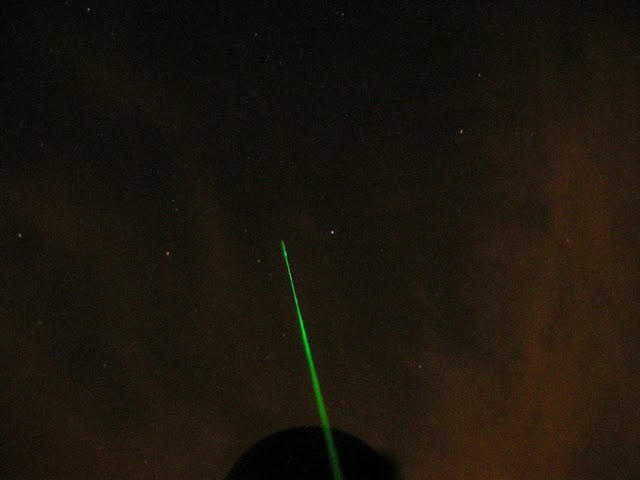The Perseids are a prolific meteor shower associated with the comet Swift-Tuttle and so-called because the point from which they appear to come, called the radiant, lies in the constellation Perseus. This weekend was supposed to be the peak period of the Perseids, where the rate of meteors reaches 60 or more per hour - a meteor a minute! But being England, the skies were of course shrouded with blankets of cloud and what was supposed to be a meteor shower turned out to be hardly a meteor drizzle - I could hardly see no more than half a dozen in three hours of gazing in between the angry rolling clouds above. Nevertheless, I did manage to capture half a dozen interesting images from last night:
You can see from some of the images above that many are framed to a gorgeous background of other bright objects such as Capella, Jupiter and the Pleiades. But you will also some of the terrible cloudy conditions - made worse by the hideous orange glare of the street lights below and the floodlights from the useless guided bus station nearby. Why anyone would spend thousands of pounds a year floodlighting an empty bus station at 2 o'clock in the morning is beyond me - with business sense like this, it probably explains why this country up to its eyeballs in debt to China.
I took the above images using the time lapse photography techniques I described in my earlier article 'How to catch falling star.', using 8-second exposures for each shot However, I also had another camera taking much faster exposures and one result of this is a meteor suspended in mid-flight, below.
Below is a magnified and 'cleaned up' version of the bright 'star' to the far let.
And how do I know the above is a blazing meteor and not just a particularly large and bright star? Because below is a shot of exactly the same position a couple of seconds later:
I'm also pretty sure it wasn't a plane either, as the 'blip' does no appear again in subsequent frames. Neverthless, when taking time lapse photographs of meteors, you should certainly make sure that the meteors you capture aren't actually aircraft, as they would leave a similar streak of light in your frame. There are two ways telling the difference. Firstly, for an 8-second exposure, a plane would leave a 'streak' that would appear in subsequent frames, whereas a meteor would only appear in one frame. Secondly, a plane would leave a distinct dotted line streak as pictured below (since the navigation lights are usually red and white).
The picture below, on the other hand, is not a plane or green meteor hurtling its way to the top of my telescope - it's just the beam from the laser I have mounted on top of my scope that I use to aim at my target star.

Below is the set-up I used for last night night's observations. There's a camera mounted on a tripod scanning the eastern horizon and an identical camera mounted on my telescope scanning the northern horizon (much of the time, I had to run from one camera to the other, swivelling the cameras to different directions, depending upon where there was an opening in the clouds). Two laptops are connected to the cameras to take the time lapse photographs automatically and save the images to hard disk. And, of course, there's a nice warm tent to retire to with a hot cuppa while the cameras and computers do all the work!
Rishon also joined me in my observations, as this was also the night we allowed him sleep out in the garden in the tent for the first time. However, despite the long afternoon nap he took earlier, staying up to after midnight was just too much for his poor little eyes and, thanks also to the cloudy skies, he fell asleep before he could see a single shooting star. He was quite inconsolable when he woke up the next morning, and the only thing that stopped the bawling was when I told him that he didn't really miss anything as there was announcement in the news this morning that last night's meteor shower had been cancelled due to cloudy weather!
All photographs on this page © Sabri Zain 2012.













No comments:
Post a Comment